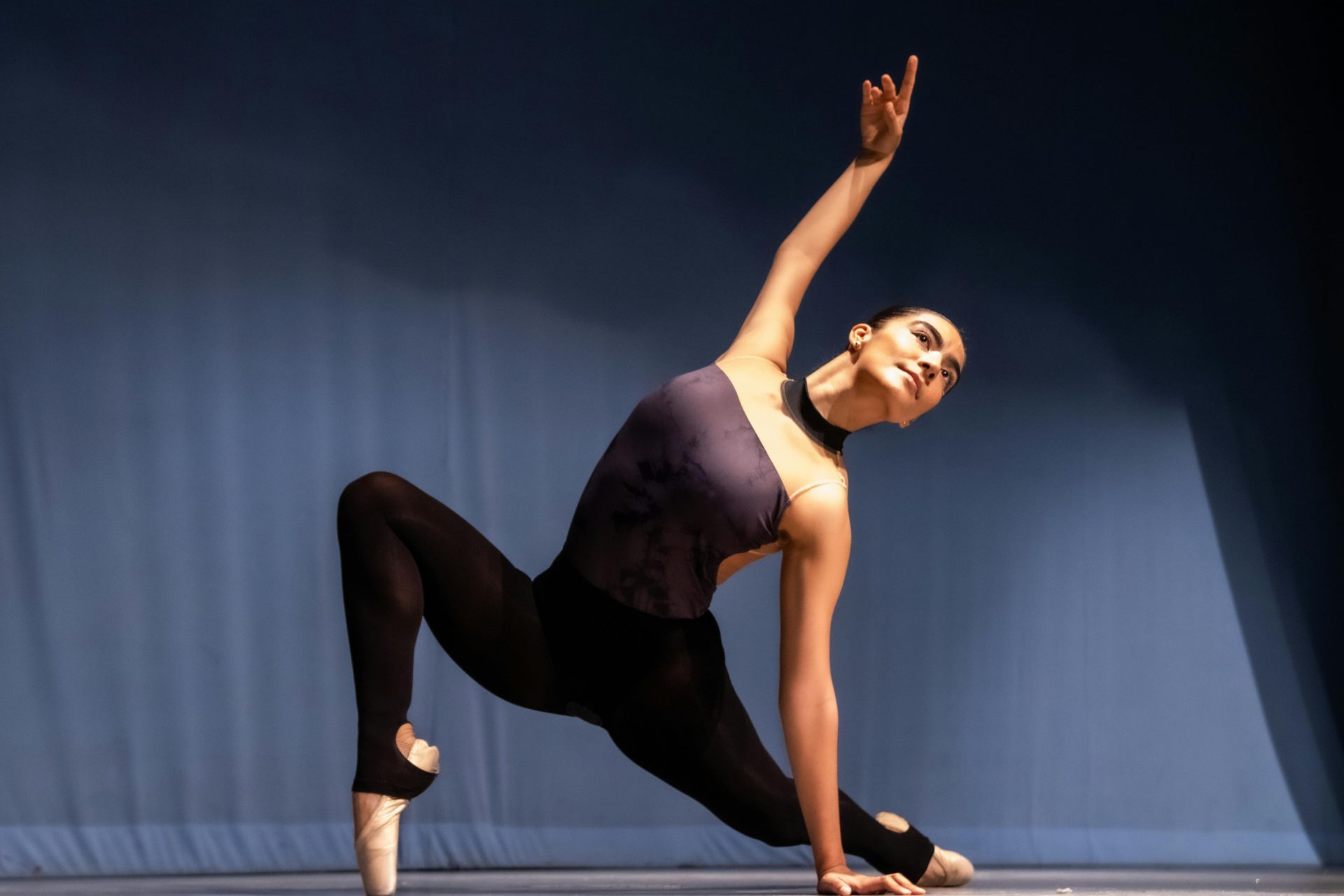
Exploring Arts Majors: Your Guide to Visual and Performing Arts Degrees
Posted by
Exploring Arts Majors
While arts degrees might not top lists of the most popular majors, the visual and performing arts still attract plenty of passionate, creative students every year. According to Data USA, nearly 150,000 students graduated with art degrees in 2023. With many schools introducing new concentrations in areas like digital media, arts management, and socially engaged practice, students have more ways than ever to shape their creative paths.
If you’re interested in (and curious about) exciting and forward-thinking arts majors, there’s never been a better time to explore the world of the visual and performing arts. Today’s art majors go beyond traditional boundaries, blending creativity with technology, politics, business, healthcare, and more. Whether you’re drawn to timeless disciplines like fine arts, acting, music, and dance — or emerging fields focused on digital media and innovative practices — many programs can help you develop your craft, expand your thinking, and push the limits of art creation in the 21st century.
What do arts majors study?
What you study as an art major depends on what you’re interested in creating and your degree program. Arts majors exist across every subfield, spanning physical and digital mediums, as well as interdisciplinary and experimental practices. A degree program’s focus can be broad or highly specialized, covering multiple disciplines or concentrating on a single art form.
- Visual arts majors include drawing, sculpture, painting, printmaking, ceramics, photography, illustration, animation, graphic design, digital media, film production, and more. Studio art is a broad visual arts major encompassing a range of media and formats, with a focus on developing artistic vision and expressive meaning.
- Performing arts majors include theatre, dance, and music performance. These programs also extend to technical or behind-the-scenes fields such as sound design, lighting design, stage management, costume design, and set design.
Majors within the visual and performing arts follow their own curricula, but most art majors include a mix of courses covering history, critical theory, and technique or skill development. Unlike other undergraduate majors, such as history or philosophy, where learning is primarily written or theoretical, arts majors emphasize hands-on learning. Key components of an arts education include studio hours, rehearsals, critiques, and portfolio or performance development.

Visual and performing arts courses
Let’s take a look at what type of courses three different art majors might study at Boston University, the University of Wisconsin–Madison, and the Savannah College of Art and Design:
Boston University, BA in Art — Sample courses:
- Doing, Making & Knowing: The CFA Experience
- Visual Arts Drawing
- History of Graphic Design
- Materials and Methods in Sculpture
- Intro to Printmaking
- Installation Art
- Art, Community, and Social Engagement
- Site-Specific Art
- View the full BU course list
University of Wisconsin-Madison, BS in Art, Graphic Design — Sample courses:
- Drawing Foundations
- Introduction to Digital Forms
- History of Graphic Design and Typography
- Foundations of Contemporary Art
- Wood Working
- Installations and Environments
- Coding for Graphic Design
- Graphic Design for Posters
- View the full UWMadison course list
Savannah College of Art and Design, BFA in Acting — Sample courses:
- Sketching and Drawing
- Design Thinking and Process
- Business Fundamentals
- History of Cinema
- Visual Culture in Context
- Improvisation for the Actor
- Acting for the Camera
- Voice-over for Game Design, Animation, and Commercials
- View the full SCAD course list
While your major dictates most of your coursework, the type of degree (BA, BS, or BFA) also influences how much of your coursework centers on visual and performing arts versus other areas of study.
Types of art degrees
Visual and performing arts majors typically earn one of three types of bachelor’s degrees:
Bachelor of Arts (BA)
This arts degree offers a broader liberal arts education balanced between studio art and general education courses. BA art majors often have more flexibility to explore other academic interests alongside art and fewer required studio hours compared to BFA arts majors.
Bachelor of Science (BS)
These degrees often emphasize technical, scientific, or applied aspects of the visual and performing arts discipline. Music technology, sound engineering, or digital media programs may fall under this category. Curricula for these types of art majors tend to include more courses in technology or production in addition to artistic training.
Bachelor of Fine Arts (BFA)
A more intensive and specialized degree with a heavier focus on studio practice, BFA art majors require more studio hours and technical skill development, preparing students for professional careers as practicing artists. A BFA typically has fewer general education requirements than BA or BS degrees.
Some visual and performing arts majors fall outside of these umbrella categories as stand-alone majors:
Bachelor of Music (BMus)
Focused exclusively on music performance, theory, composition, and education, this degree provides rigorous training in musicianship, plus extensive individual and ensemble performance opportunities.
Bachelor of Design (BDes)
Emphasizing practical and technical skills, this degree includes studio courses cultivating design thinking, problem-solving, and project development in areas like graphic, industrial, or fashion design.
Bachelor of Architecture (BArch)
This professional degree blends architectural theory, design, technology, and construction. Demanding studio work, technical courses, and practical training typically require five years to complete.
If, after your undergraduate education, you wanted to take more advanced studies in the visual and performing arts, you could pursue one of two graduate-level art degrees: a Master of Arts (MA) and a Master of Fine Arts (MFA).

Earning a Bachelor of Fine Arts (BFA)
BFA programs are intensive and creatively demanding, perfect for students serious about pursuing art as a career. Students may take courses in composition, performance, or production, with an overarching emphasis on technique, creative development, and conceptual exploration. Many programs allow students to choose a concentration, such as painting, graphic design, acting, or dance, while still encouraging experimentation across different styles or media.
Depending on the school and size of the program, acceptance into BFA arts majors can be quite competitive. Admission typically involves an additional artistic review — most commonly a portfolio for visual arts or an audition for performing arts. Admissions committees use these materials to assess an applicant’s skill level, creativity, and growth potential. Some programs also require interviews, callbacks, or statements of intent as part of the application process.
Students begin their four-year journey with foundational coursework that introduces key techniques, tools, and ideas. As they progress, students take more specialized and advanced classes within their chosen focus. The final year often includes a capstone project, thesis performance, or senior exhibition, designed to demonstrate artistic growth and professional readiness. Some programs also offer internship or mentorship opportunities in the final semesters.
A caveat: A Bachelor of Fine Arts is different from a Bachelor in Fine Arts. You can earn a Bachelor of Fine Arts, or BFA, in any number of disciplines, such as Animation, Graphic Design, Fashion Design, Illustration, Acting, and, yes, fine arts. A Bachelor in Fine Arts typically means your degree is centered around visual/studio arts, like drawing, painting, and sculpture. BA, BS, and BFA degrees all fit under the Bachelor in Fine Arts umbrella.
Up & Coming Arts Majors: Visual Arts
Here is a roundup of up-and-coming arts majors for students interested in the visual arts:
Art and Technology
This field bridges traditional artistic skills with cutting-edge digital tools. By experimenting with media such as animation, coding, video, and digital fabrication, students craft innovative projects from interactive installations to algorithmic art that redefine how creativity and technology intersect. (Schools offering this degree: Arcadia University and University of Oregon)
Immersive Media
This focus invites students to design virtual and augmented reality experiences by mastering 3D modeling, creative coding, spatial computing, and projection techniques. This program prepares creators to build engaging environments for physical and virtual engagement. (Schools offering this degree: University of Maryland and University of Miami)
Sustainable Design
An up-and-coming major, sustainable design empowers students to tackle environmental challenges through the thoughtful design of buildings, products, landscapes, and urban spaces. This major focuses on fostering resilience and ecological responsibility, guiding students to create solutions that benefit both people and the planet. (Schools offering this degree: University of Illinois Urbana–Champaign and UC Berkeley)
Design, Innovation & Society
This concentration explores the powerful role design plays in shaping cultural and social experiences. The goal is to develop user-centered innovations that address real-world problems by blending creativity and critical thinking to create real impact. (Schools offering this degree: UWMadison and Rensselaer Polytechnic Institute)
Emerging Media
This centers on storytelling and creative expression through digital video, interactive technologies, and evolving media formats. Students gain hands-on experience crafting content that resonates across today’s diverse media landscape. (Schools offering this degree: University of Central Florida and University of Nebraska)
Experimental Animation
The realm challenges students to push the boundaries of visual storytelling using various animation methods, like hand-drawn, stop-motion, and digital techniques, encouraging bold artistic experimentation and unique narratives. (Schools offering this degree: CalArts and Laguna College of Art + Design)
Interactive Arts
This field combines technology with artistic vision to create dynamic, participatory experiences. Students work with physical computing, immersive media, and digital platforms to design projects that invite active audience engagement and exploration. (Schools offering this degree: NYU and Maryland Institute College of Art)
Up & Coming Arts Majors: Performing Arts
Here are some exciting performing arts majors offered by universities and performing arts schools:
Acting for Stage, Screen, and New Media
This major trains performers to adapt their craft across live theater, film, television, and emerging digital platforms. Students refine skills in voice, movement, and character development while exploring how acting approaches must evolve in new media contexts. (Schools offering this degree: Michigan State University and University of Southern California)
Commercial Dance
A focus on commercial dance prepares students for dynamic careers in dance styles popularized by music videos, theater, and live entertainment. Emphasizing technique, performance, and industry skills, the program blends rigorous training with real-world professional experience. (Schools offering this degree: Boston Conservatory at Berklee and Pace University)
Choreography
A major in choreography focuses on the art of creating original dance works, teaching students to design movement narratives and collaborate with performers and designers. This major fosters creativity, technical expertise, and an understanding of dance as a storytelling medium. (Schools offering this degree: UC Irvine and LMU)
Sound Design
This focus equips students with the technical and creative skills needed to shape the auditory world of theater, film, and interactive media. Through hands-on training in acoustics, mixing, and sound editing, students learn to craft immersive soundscapes that enhance storytelling. (Schools offering this degree: Michigan Tech and Carnegie Mellon)
Performance Studies
The field of performance studies investigates performance beyond traditional theater, examining cultural rituals, social interactions, and how performances reflect and embody the human experience. Students analyze and create work that deepens our understanding of how performance shapes identity and community across cultures. (Schools offering this degree: Northwestern University and NYU)
Entertainment & Arts Management
This arts major combines business skills with a passion for the arts, preparing students to manage projects, venues, and talent in different creative industries. While it’s not a performance major, it offers a hands-on path to work behind the scenes supporting and promoting performing artists. (Schools offering this degree: Drexel University and Pace University)
Performing Arts & Social Justice
A major in performing arts and social justice connects artistic expression with activism, encouraging students to explore how performance can challenge societal norms and inspire change. The program emphasizes community engagement and the role of the arts in social movements. (Schools offering this degree: University of San Francisco and a certificate at American University)
Degrees that pair well with art
Conservatory-style visual and performing arts schools like CalArts, Juilliard, or the Boston Conservatory at Berklee only offer arts majors. That means art majors only take coursework in the arts. You can combine a major in visual arts or the performing arts with a separate subject area by applying to an arts program at a liberal arts or research university.
Many colleges and universities across the country have outstanding visual and performing arts majors and offer opportunities to pursue your other academic interests. Pursuing a liberal arts education opens up plenty of opportunities later to pursue more varied and unique art-related careers. For instance, combining a major in visual arts with computer science could lead to a career in UX design or game development. Pairing performing arts majors with a degree in psychology could prepare you for a career in arts therapy or education.
Instead of combining degrees, you could also look into interdisciplinary arts majors spanning several disciplines. Typically, different schools within a college or university offer these art major degrees, creating a structured, joint program covering important topics in each field. Check out these interdisciplinary arts majors and dual degree programs:
Carnegie Mellon’s BXA Intercollege Degree Programs
These arts majors allow students to combine an art major with a degree in the humanities, natural sciences, mathematics, computer science, and engineering.
Northwestern’s Dual Degree Programs
In 5 years, students can earn two bachelor's degrees in Music + Liberal Arts, Communication, Engineering, Journalism, or Education and Social Policy.
UPenn’s Digital Media Design Program
Students will earn a Bachelor's in Engineering and Science while taking courses in computer graphics and fine arts.
Brown + RISD’s Dual Degree Program
This unique program offers students the opportunity to earn two degrees from both Brown and RISD in just 5 years.
NYU’s Gallatin School of Individualized Study
Here, students can create their own interdisciplinary arts majors and take interdisciplinary seminars that combine art with science, politics, nature, and more.
Are arts majors a good investment?
The value of a major in visual arts or performing arts will depend on a number of factors, including cost, location, and relevance to your future career goals.
Earning a four-year art degree comes with a significant cost. While in-state tuition, room and board at a public university can cost $100k or more, that figure more than doubles at private universities. Think carefully about the return on investment (ROI). A college degree positively impacts earning potential, but art majors don’t necessarily enjoy the same level of financial benefit.
According to CareerExplorer, fine arts majors earn an average of $40k per year. Of course, your salary will depend on your career path. Creative directors, product designers, or special effects artists can eventually earn a three-figure salary. However, given the range of realistic career options and salaries for arts majors, choose a visual and performing arts major that you and your family can comfortably afford.
Value beyond salary
One of the most valuable parts of a college education is the network of peers, mentors, and professionals you’ll build. Many of these relationships are formed through local partnerships and opportunities. As such, you should consider choosing a school in a city that’s a hub for your artistic field. These connections can help you jumpstart your creative career.
If you plan to become an art educator, museum curator, or art therapist — fields that typically require formal degrees and certifications — arts education can provide the essential skills and credentials required to land your first role. However, many artists don’t follow the traditional college path and instead learn by doing, through classes, workshops, apprenticeships, and self-practice.
Whether you’re planning to pursue an up-and-coming arts major or forge your own path as an artist, your journey in the arts will be as unique as you are. Choose the route that best supports your goals and positions you for success.
Blog Categories
- Career Advice
- College Admissions
- Colleges & Universities
- Financial Aid and Scholarships
- For Counselors
- For Parents
- For Students
- Gap Years
- Mental Health and Wellness
- Online Learning
- Performing and Visual Arts
- STEM Majors and More
- Summer Programs
- Teen Volunteering
- Trade & Vocational Schools
- Tutoring & Test Prep

Organization with listings on TeenLife? Login here
Register for Free
We’re here to help you find your best-fit teen-centered academic and enrichment opportunities.
Forgot Password
"*" indicates required fields










